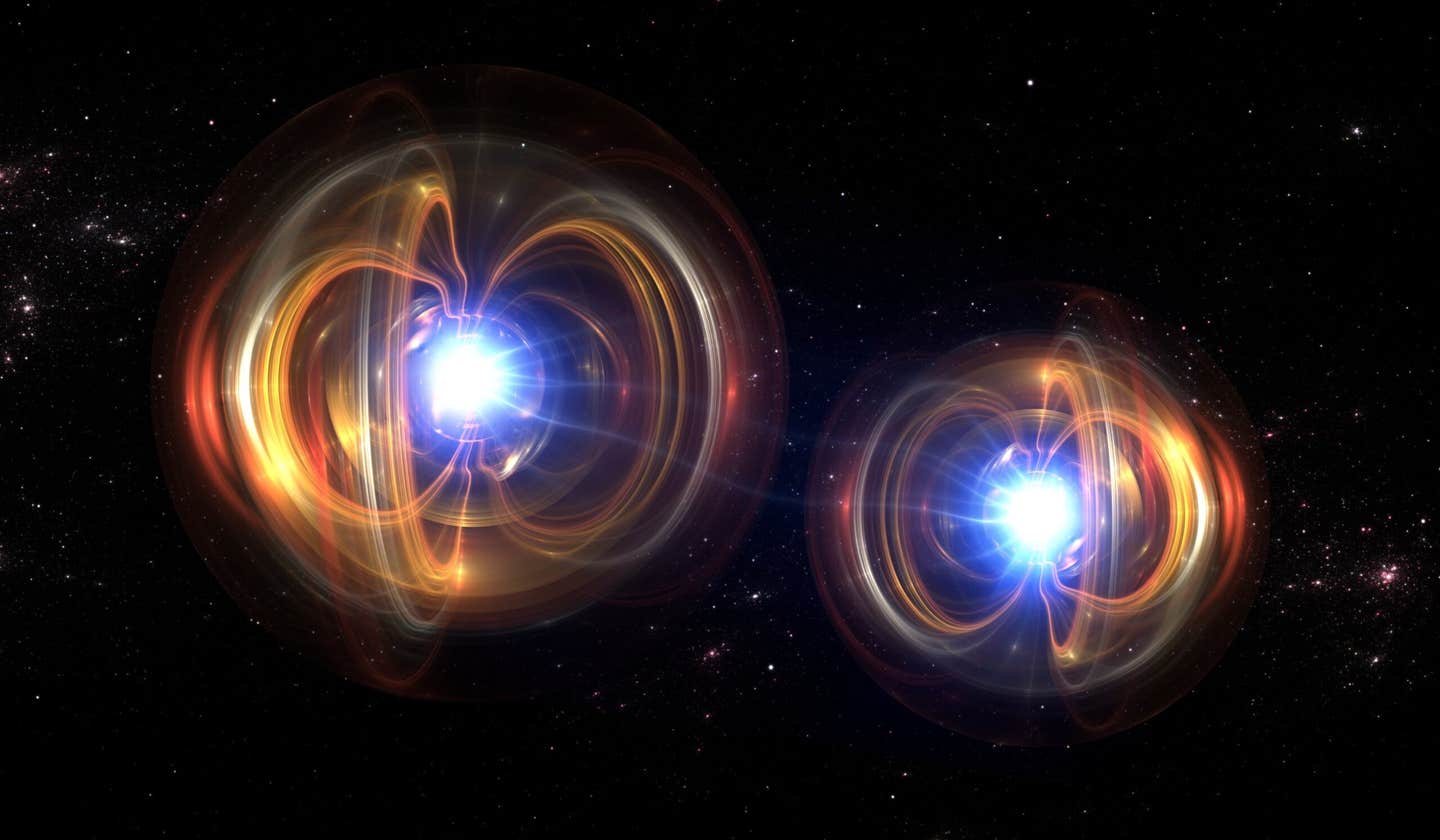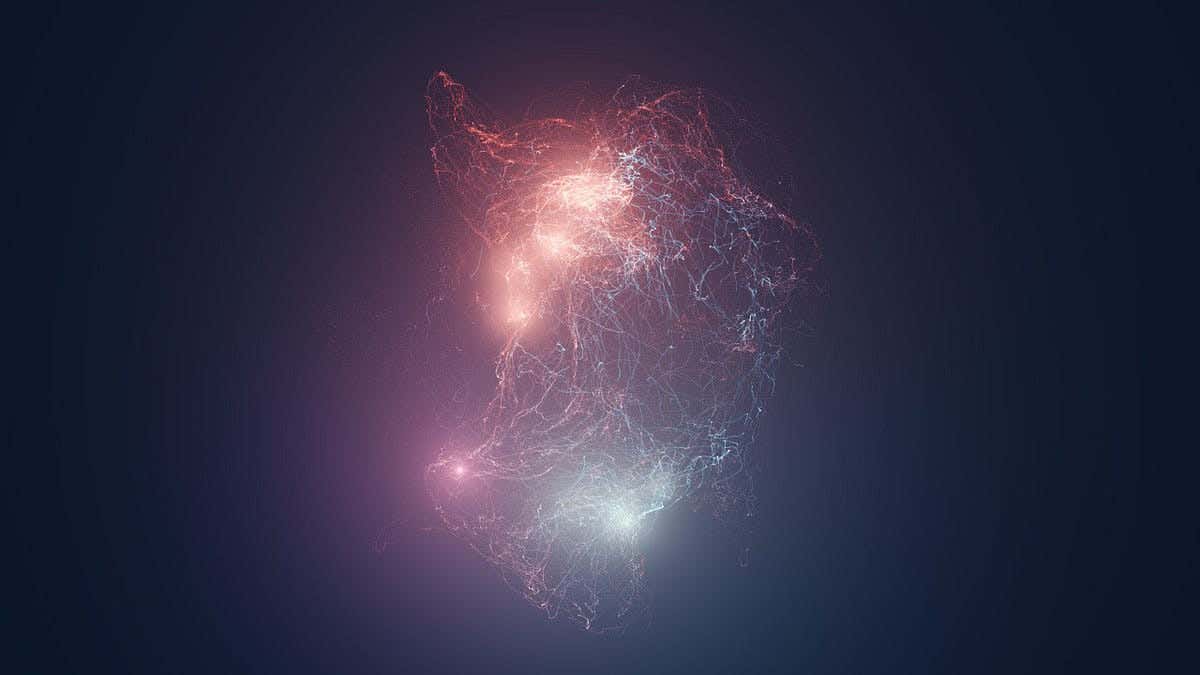Scientists discover a way to detect physics’ most wanted particle — the graviton
Physicists may soon detect single gravitons, the elusive particles that form the quantum foundation of gravity. Learn how quantum sensing technology makes this once-impossible experiment possible.

In a quantum theory of gravity, scientists expect the existence of gravitons, indivisible particles that make up the force of gravity. (CREDIT: CC BY-SA 3.0)
A recent breakthrough led by Igor Pikovski, a physics professor at Stevens Institute of Technology, may soon allow scientists to detect single gravitons, the quantum building blocks of gravity. Long considered impossible, Pikovski’s team believes that with advancements in quantum technology, detecting these elusive particles is now within reach.
"This is a foundational experiment that was long thought impossible, but we think we’ve found a way to do it," says Pikovski, who is also affiliated with Stockholm University.
Working alongside Pikovski were Germain Tobar, Thomas Beitel, and postdoctoral researcher Sreenath Manikandan. Their findings, published in Nature Communications, explore how quantum sensing could be used to detect gravitons.
Gravitons: The Elusive Particles
Gravity is a force we all experience daily—objects fall, and planets orbit each other. A century ago, Einstein transformed our understanding of gravity by describing it as a warping of space and time. Today, we’ve confirmed some of the phenomena predicted by his theory, such as time dilation and gravitational waves.
Related Stories
Despite these advancements, gravity remains unique among the fundamental forces. While other forces—like electromagnetism—are explained by quantum mechanics, gravity has only been understood in its classical form. Bridging the gap between gravity and quantum mechanics remains one of the great challenges in physics.
In a quantum theory of gravity, scientists expect the existence of gravitons, indivisible particles that make up the force of gravity, much like photons are the building blocks of light.
In theory, these gravitons form the gravitational waves that ripple through space, often caused by cosmic events such as black hole collisions. Large detectors like LIGO (Laser Interferometer Gravitational-Wave Observatory) have proven the existence of these waves, but no one has yet detected a single graviton. The challenge lies in the fact that gravitons are so small and weakly interacting that identifying them has been thought to be impossible—until now.
A New Approach to Detection
Pikovski and his team propose a novel solution: combining existing technology with quantum sensing techniques to detect single gravitons. Their proposed setup involves using an acoustic resonator, a heavy cylinder, paired with advanced methods to monitor energy states.
"Our solution is similar to the photoelectric effect that led Einstein to the quantum theory of light," Pikovski explains. "But in our case, we’re working with gravitational waves instead of electromagnetic waves. The key is that energy is exchanged in discrete steps—single gravitons are absorbed and emitted."
The process relies on cooling the material and then using quantum sensing to track the energy changes in precise steps. "We need to cool the material and monitor how the energy changes," explains Manikandan. "By observing these quantum jumps in the material, we can deduce that a graviton was absorbed."
One of the key innovations the team suggests is using data from LIGO to help isolate single gravitons. LIGO, a U.S.-based observatory, has been successful in detecting gravitational waves but isn’t equipped to detect individual gravitons. However, Pikovski’s team believes that combining LIGO data with their detector could help pinpoint graviton events.
"The LIGO observatories are great at detecting gravitational waves, but they can't catch single gravitons," says Beitel, a doctoral student at Stevens. "We can use their data to cross-correlate with our detector to isolate single gravitons."
The Experimental Design
Designing an experiment capable of detecting gravitons involved a mix of mathematical creativity and technological advancements. For years, physicists have dismissed the possibility of such an experiment. According to Pikovski, previous attempts at quantum experiments involving gravity were limited to very small particles like atoms, which interact weakly with gravitons.
Recent technological advances have changed that. Scientists have now been able to create and observe quantum effects in much larger, macroscopic objects. These larger objects, such as the ones used in Pikovski’s proposed experiment, interact more strongly with gravity, making them ideal for detecting gravitons.
The team focused on using data from gravitational waves, such as those detected in 2017 from a collision between two neutron stars. This data allowed them to calculate the conditions necessary to detect a single graviton. According to Manikandan, the measurements could be made using a device similar to the Weber bar, an instrument invented by Joseph Weber for detecting gravitational waves.
Weber bars are heavy cylindrical objects that absorb and emit gravitons, functioning similarly to how photons—particles of light—are emitted and absorbed. In Pikovski’s experiment, a quantum detector would be cooled to its lowest energy state.
When a gravitational wave passed through, the detector would vibrate slightly. By monitoring how the vibrations change in discrete steps, quantum sensors could detect the presence of individual gravitons. Each of these discrete changes, also known as quantum jumps, would correspond to a graviton event.
Challenges and Future Directions
While the theory behind the experiment is sound, practical challenges remain. The necessary quantum sensing technology to detect single gravitons isn’t fully developed yet. "Quantum jumps have been observed in materials recently, but not yet at the masses we need," says Tobar, a graduate student at Stockholm University.
However, Tobar is optimistic about the pace of technological development. "Technology advances very rapidly, and we have more ideas on how to make it easier."
The team is confident that with the right quantum-sensing technology, detecting gravitons is within reach. "We’re certain this experiment would work," Beitel says. "Now that we know gravitons can be detected, it’s added motivation to further develop the technology."
Beyond the technological hurdles, the inspiration for the experiment lies in a larger scientific goal: solving the puzzle of quantum gravity. "Quantum gravity is still unsolved, and it’s too hard to test it in its full glory," says Pikovski. "But we can now take the first steps, just as scientists did over a hundred years ago with the quantum theory of light."
As scientists continue to develop quantum technologies, the prospect of detecting individual gravitons may soon move from theory to reality. Once detected, these particles could offer a deeper understanding of gravity and its connection to the quantum world.
Note: Materials provided above by The Brighter Side of News. Content may be edited for style and length.
Like these kind of feel good stories? Get The Brighter Side of News' newsletter.
Joshua Shavit
Science & Technology Writer | AI and Robotics Reporter
Joshua Shavit is a Los Angeles-based science and technology writer with a passion for exploring the breakthroughs shaping the future. As a contributor to The Brighter Side of News, he focuses on positive and transformative advancements in AI, technology, physics, engineering, robotics and space science. Joshua is currently working towards a Bachelor of Science in Business Administration at the University of California, Berkeley. He combines his academic background with a talent for storytelling, making complex scientific discoveries engaging and accessible. His work highlights the innovators behind the ideas, bringing readers closer to the people driving progress.



